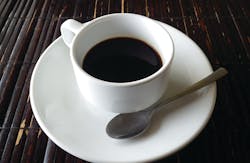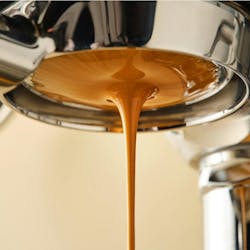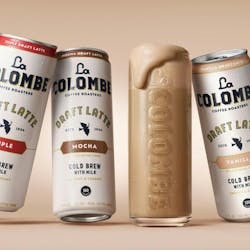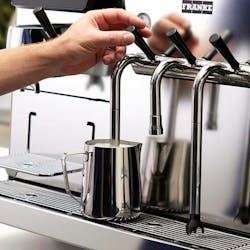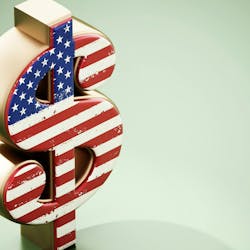Americans seem to be loving their caffeine more than ever. According to the recent National Coffee Association’s (NCA) 2017 National Coffee Drinking Trends (NCDT) consumption tracking report, the percentage of Americans drinking coffee on a daily basis increased to 62 percent in 2017, up from 57 percent in 2016. The increase brings overall coffee consumption back above 2014 levels while reversing slow declines since 2013.
According to the NCDT, “soaring consumer enthusiasm” for coffee varieties was among the drivers behind the increase in addition to a “robust increase” in past-day coffee drinking among younger consumers.
“More of us are drinking coffee, and younger consumers appear to be leading the charge,” said Bill Murray, NCA's president and CEO, in the report’s news release. “A steadily growing taste for gourmet varieties is also driving a wider trend toward specialty beverages.”
In fact, while the research found the frequency of daily consumption continued to grow for all age groups, the most robust increase occurred among those from 13 to 18 years to age, whose daily consumption rose to 37 percent in 2017 from 31 percent in 2016, capping a 14-point increase over 2014’s 23 percent. The 40 to 59 age group showed an 11-point uptick over last year, rising from 53 percent in 2016 to 64 percent in 2017. Those above 60 years old moved to 68 percent in 2017 from 64 percent last year. On the younger end of the spectrum, daily coffee consumption increased from 60 percent to 63 percent among 25-39 year olds while the 18 to 24 year age group edged up to 50 percent from 2016’s 48 percent.
Going gourmet
For the first time in the NCDT’s 67-year history, more than half (59 percent) of coffee cups consumed daily are now classified as gourmet, compared to 46 percent in 2012. While traditional drip brewers are still the most common method of preparation, 2017 was the first year where fewer than half of daily coffee consumers drank coffee prepared with a drip brewer on a past-day basis (46 percent).
Perhaps most notably, daily consumption of gourmet coffee beverages among those 40 to 59 years of age jumped to 39 percent in 2017 from just 24 percent in 2016. Other daily consumption increases include 36 percent to 39 percent for those 18 to 24 years old, 41 percent to 50 percent for the 25 to 39 year olds, and 24 percent to 34 percent among the over 60 year old group. Among 13 to 18 year olds, 29 percent reported that they drank a gourmet coffee beverage yesterday, compared with 19 percent for traditional coffee, and a 70 percent share of the cups they drank were gourmet versus 30 percent non-gourmet.
Single cup also grows
In addition to gourmet trends, single-cup brewing also has also grown considerably in 2017. NCA data shows that 33 percent of American households now own a single-cup brewer, up from 29 percent in 2016 and up nearly five times since 2012.
Intent to purchase a single cup brewer also rose with those who would “definitely or probably buy” a single-cup brewer jumping to 17 percent in 2017, up from 10 percent in 2016. Similarly, definite or probable gifting intent jumped by 5 percentage points over last year.
Non-espresso based beverages
To reflect the emerging popularity of premium beverages among mainstream consumers, the NCA added the new category “Non-Espresso Based Beverages” to this year’s NCDT. Beverages include cold brew, nitro coffee and frozen blended coffee. These beverages are predominately popular among consumers under 35 years of age and the NCA believes this may present potential long-term growth opportunities for the industry.
“The 2017 National Coffee Drinking Trends report shows that the coffee market is undergoing a period of transformation, driven by the demands of a new generation and the influence of new innovations,” wrote Kyra Auffermann, communications and content manager at NCA, in the association’s blog following the publication of the report. ‘’'Coffee’ used to be associated with a traditional percolated brew, consumed at home at the breakfast table. Now the perception of coffee has expanded to include an afternoon nitro cold brew while working at a café, or a bottle from a vending machine in the train station after work.”
